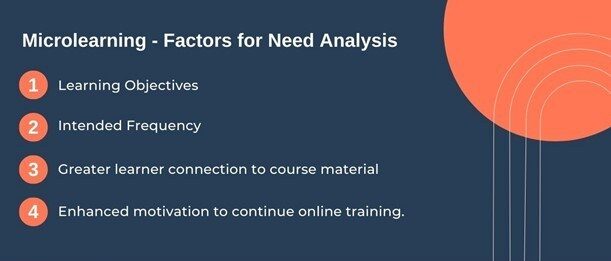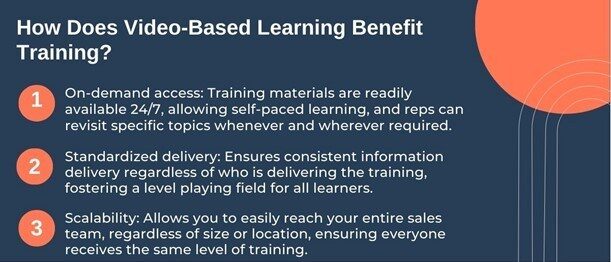Microlearning: 9 Engaging Formats For Training
Ever felt overwhelmed by lengthy eLearning courses? Or perhaps you’ve struggled to keep employees engaged in traditional training sessions? If so, microlearning might be the solution you’ve been searching for. We live in a fast-paced business world where employees are constantly bombarded with information. Traditional training methods, with their lengthy lectures and hours of content, can be overwhelming and ineffective. Various microlearning formats, on the other hand, offer a more digestible and engaging approach to learning.
Imagine having access to short, focused training modules that can be easily incorporated into your employees’ busy schedules. Microlearning empowers learners to take control of their education, learning at their own pace and when it’s most convenient for them.
In this article, we’ll delve into the 9 most effective microlearning formats and the development tools that can help you create engaging and impactful training experiences. So, if you’re ready to revolutionize your corporate training and empower your employees to learn and grow, let’s dive into the world of microlearning!
What Is Microlearning?
Microlearning is a powerful tool for corporate training because it allows organizations to deliver targeted, effective training that meets the needs of today’s busy learners. By breaking down complex topics into smaller, more manageable chunks, microlearning can help employees learn more efficiently and effectively.
Key Characteristics Of Microlearning Formats
- Short and focused: Microlearning modules are designed to be concise and focused on a specific learning objective. This allows learners to quickly grasp key concepts without feeling overwhelmed. For example, a microlearning module on customer service could focus on a specific skill, such as handling difficult customer complaints.
- Modular: Microlearning content is typically broken down into small, self-contained modules that can be learned independently or as part of a larger course. This flexibility allows learners to choose the modules that are most relevant to their needs and interests. For instance, a larger course on sales techniques could be divided into smaller modules on product knowledge, customer relationship building, and closing deals.
- Interactive: Microlearning often incorporates interactive elements such as quizzes, simulations, and games to make learning more engaging and effective. These interactive elements can help learners actively participate in the learning process and reinforce key concepts. For example, a microlearning module on safety procedures could include a simulation where learners practice responding to emergency situations.
- Mobile-friendly: Microlearning modules are often designed to be accessible on mobile devices, allowing learners to learn on the go. This makes microlearning particularly suitable for busy professionals who may not have time for traditional classroom-based training.
- Personalized: Microlearning can be personalized to meet the individual needs and preferences of learners. This can include providing different learning paths or offering personalized feedback. For example, a microlearning module on programming could offer different learning paths for beginners and advanced learners.
What Are The Benefits Of Microlearning For Corporate Training?
Microlearning offers numerous advantages for both learners and organizations. By breaking down complex topics into smaller, more digestible modules, microlearning can improve knowledge retention, engagement, and productivity.
Benefits For Learners
- Improved knowledge retention: Studies have shown that microlearning can significantly enhance knowledge retention. When information is presented in short, focused bursts, learners are more likely to remember and apply it effectively. For example, a sales team that receives microlearning modules on product features and benefits is more likely to retain that information and use it to close deals.
- Increased engagement: Microlearning is designed to be engaging and interactive, making it more likely to capture learners’ attention. This can lead to higher completion rates and better learning outcomes. For instance, a gamified microlearning module on customer service can make the learning process more fun and engaging for employees.
- Flexibility and convenience: Microlearning modules can be accessed on mobile devices, allowing learners to learn at their own pace and whenever it’s convenient for them. This flexibility can be particularly beneficial for busy professionals who may not have time for traditional classroom-based training.
Benefits For Organizations
- Enhanced productivity: By providing employees with the knowledge and skills they need to succeed, microlearning can improve productivity and efficiency. For example, a company that uses microlearning to train employees on new software can help them become more proficient and productive in their roles.
- Reduced training costs: Microlearning can be more cost-effective than traditional training methods, as it requires less time and resources to develop and deliver. This can be particularly beneficial for organizations with limited budgets.
- Improved employee satisfaction: Microlearning can lead to higher employee satisfaction by providing them with the tools and resources they need to succeed. When employees feel supported and empowered, they are more likely to be engaged and productive.
Microlearning offers numerous benefits for both learners and organizations. By incorporating microlearning into your corporate training programs, you can improve knowledge retention, engagement, and productivity, ultimately leading to a more successful and effective workforce.
What Are The Top Microlearning Formats For Engaging eLearning Design And Development?
1. Micro-Lectures
Micro-lectures are short, focused video lectures that deliver concise information on a specific topic. They are a highly efficient way to deliver information and can be easily incorporated into learners’ busy schedules. Micro-lectures are also well-suited for on-demand learning, allowing learners to access content at their convenience.
Benefits of micro-lectures
- Efficiency: Micro-lectures allow for quick and efficient delivery of information, making them ideal for busy learners.
- Accessibility: Micro-lectures can be easily accessed on mobile devices, making them convenient for learners on the go.
- Engagement: Micro-lectures can be made more engaging by using a conversational tone, adding humor or storytelling elements, and incorporating visuals.
- Flexibility: Micro-lectures can be used to introduce new topics, provide expert insights, or review key concepts.
Tips for creating effective micro-lectures
- Keep it concise: Aim for a length of 3–5 minutes to maintain learner attention.
- Use clear and engaging visuals: Incorporate visuals such as slides, animations, or screen recordings to enhance understanding and make the lectures more interesting.
- Provide a summary or key takeaways: At the end of the micro-lecture, summarize the main points and provide key takeaways for learners to remember.
- Use a conversational tone: Speak in a natural and conversational tone to make the lectures more engaging and relatable.
- Consider adding humor or storytelling elements: Incorporating humor or storytelling can make micro-lectures more memorable and enjoyable.
2. Interactive Infographics
Interactive infographics are visual representations of data or information that allow learners to actively engage with the content. They can be a powerful tool for making complex information more accessible, engaging, and memorable. By combining visuals, data, and interactivity, infographics can help learners visualize data, identify trends, and make informed decisions.
Benefits of interactive infographics
- Enhanced understanding: Interactive infographics can help learners grasp complex concepts more easily by presenting information in a visually appealing and interactive format.
- Improved engagement: The interactive elements of infographics can make learning more fun and engaging, increasing learner motivation and participation.
- Better decision making: By visualizing data and identifying trends, learners can make more informed decisions and solve problems more effectively.
Tips for creating effective interactive infographics
- Use clear and concise labels: Ensure that all labels and text are easy to read and understand.
- Provide interactive elements: Incorporate interactive elements such as hover-over information, clickable links, or drag-and-drop features to encourage learner engagement.
- Consider using animation or motion graphics: Animation and motion graphics can make infographics more visually appealing and dynamic, capturing learners’ attention.
- Ensure mobile-friendliness: Design infographics to be accessible and responsive on mobile devices, as many learners access training materials on their smartphones or tablets.
- Keep it simple: Avoid overwhelming learners with too much information. Focus on presenting the key points in a clear and concise manner.
Here’s a mini-infographic about microlearning:

3. Scenario-Based Learning
Scenario-based learning is a learning approach that immerses learners in simulated real-world situations, allowing them to practice skills and decision making in a safe and controlled environment. It’s a highly effective way to bridge the gap between theoretical knowledge and practical application.
Benefits of scenario-based learning
- Engaging and memorable: By placing learners in realistic scenarios, scenario-based learning creates a more immersive and engaging learning experience. This can lead to improved knowledge retention and application.
- Skill development: Scenario-based learning provides opportunities for learners to practice essential skills such as problem solving, critical thinking, and decision making.
- Risk-free learning: Learners can experiment and make mistakes in a safe environment without facing real-world consequences. This can boost confidence and encourage experimentation.
- Customization: Scenarios can be tailored to specific learning objectives and learner needs, making them highly adaptable to different corporate training contexts.
Tips for creating effective scenario-based learning experiences
- Create realistic scenarios: Ensure that the scenarios are relevant to learners’ roles and experiences.
- Provide clear instructions and objectives: Clearly communicate the goals of the scenario and the expected outcomes.
- Offer opportunities for feedback and coaching: Provide learners with feedback and guidance as they navigate the scenario.
- Consider using branching scenarios: Allow learners to make choices and experience different outcomes based on their decisions. This can make the learning experience more personalized and engaging.
4. Quizzes And Gamified Learning
Quizzes and gamified learning involve incorporating game-like elements into microlearning modules to make the learning process more engaging and interactive. By adding elements of fun and competition, quizzes and gamified learning can help improve learner motivation and engagement.
Benefits of incorporating quizzes and gamified learning
- Reinforcement of learning: Quizzes can help learners reinforce key concepts and test their understanding of the material.
- Immediate feedback: Quizzes can provide learners with immediate feedback on their performance, helping them identify areas where they need to improve.
- Enhanced engagement: Gamification elements such as points, badges, and leaderboards can create a sense of competition and achievement, making learning more enjoyable and motivating.
- Assessment of knowledge: Quizzes can be used to assess learners’ knowledge and understanding of the material.
Tips for incorporating quizzes and gamified learning
- Use a variety of question formats: Employ a mix of question formats, such as multiple choice, true/false, and fill-in-the-blank, to assess different types of knowledge.
- Provide immediate feedback: Give learners instant feedback on their answers to help them identify areas where they need to improve.
- Add points or rewards: Gamify the learning experience by awarding points or badges for correct answers or completing challenges.
- Use leaderboards: Create leaderboards to encourage competition and motivate learners to strive for higher scores.
- Incorporate progress bars: Visualize learners’ progress through the course using progress bars to keep them motivated and engaged.
5. Micro-Simulations
Micro-simulations are interactive learning experiences that allow learners to practice skills and decision making in a controlled environment. They can be a valuable tool for developing practical skills and building confidence.
Benefits of micro-simulations
- Skill development: Micro-simulations provide opportunities to practice skills such as problem solving, critical thinking, and decision making.
- Confidence building: By practicing in a safe environment, learners can gain confidence in their abilities and reduce anxiety.
- Practical application: Micro-simulations help learners apply theoretical knowledge to real-world scenarios, preparing them for success on the job.
Tips for creating effective micro-simulations
- Create realistic scenarios: Ensure the simulations reflect real-world challenges and situations.
- Provide clear instructions and objectives: Clearly communicate the goals of the simulation and the expected outcomes.
- Offer feedback and coaching: Provide learners with feedback and guidance as they navigate the simulation.
- Consider branching scenarios: Allow learners to make choices and experience different outcomes based on their decisions.
6. Micro Case Studies
Micro case studies are real-world examples or stories that illustrate a specific concept or principle. They can be a powerful tool for helping learners understand how theoretical concepts apply to real-world situations.
Benefits of micro case studies
- Critical thinking: Micro case studies promote critical thinking by requiring learners to analyze and evaluate information.
- Discussion and engagement: Case studies can spark discussions, encourage collaboration, and enhance learner engagement.
- Knowledge retention: By applying concepts to real-world scenarios, learners can better retain and understand the material.
Tips for creating effective micro case studies
- Choose relevant and engaging cases: Select cases that are relevant to the learning objectives and interesting to learners.
- Provide context and background information: Give learners the necessary information to understand the case.
- Encourage analysis and discussion: Ask learners to analyze the case, identify key issues, and propose solutions.
- Provide discussion questions or prompts: Offer guiding questions to help learners focus their analysis and spark deeper discussions.
7. Social Learning And Knowledge Sharing
Social learning and knowledge sharing involve fostering collaboration and interaction among learners to exchange ideas, ask questions, and receive feedback. This approach can create a more engaging and effective learning experience by leveraging the power of peer-to-peer learning.
Benefits of social learning and knowledge sharing
- Enhanced engagement: Social learning can increase learner motivation and engagement by creating a sense of community and belonging.
- Knowledge sharing: Learners can share their experiences, insights, and best practices with others, leading to a deeper understanding of the material.
- Problem solving: By collaborating with peers, learners can develop problem-solving skills and find creative solutions to challenges.
- Networking opportunities: Social learning can provide opportunities for learners to connect with others who have similar interests or experiences, expanding their professional network.
Tips for implementing social learning and knowledge sharing
- Use discussion forums or online communities: Create online spaces where learners can discuss topics, ask questions, and share their perspectives.
- Encourage learner participation: Foster a culture of participation by providing prompts, asking thought-provoking questions, and recognizing contributions.
- Facilitate peer feedback: Encourage learners to provide feedback to each other on their work or ideas.
- Create social learning activities: Organize group projects, collaborative problem-solving exercises, or knowledge-sharing sessions.
- Utilize social media: Leverage social media platforms to connect learners and facilitate discussions.
8. Checklists And Job Aids
Checklists and job aids are concise reference materials that provide step-by-step instructions or guidelines. They can be a valuable tool for supporting knowledge retention, improving efficiency, and reducing errors.
Benefits checklists and job aids
- Enhanced knowledge retention: Checklists and job aids can help learners remember important information and procedures.
- Improved efficiency: By providing clear guidance, checklists and job aids can help learners complete tasks more efficiently and accurately.
- Error reduction: Checklists can help to prevent errors by ensuring that learners follow all necessary steps and procedures.
Tips for creating effective checklists and job aids
- Keep them concise: Checklists and job aids should be easy to read and understand. Avoid using overly complex language or jargon.
- Use clear and concise language: Use simple, straightforward language that is easy to understand.
- Provide visual aids: Consider using visuals such as diagrams or flowcharts to enhance comprehension.
- Customize for specific needs: Tailor checklists and job aids to the specific needs of different learners or roles.
- Make them accessible: Ensure that checklists and job aids are easily accessible to learners, both in print and digital formats.
9. Video-Based Microlearning
Video-based microlearning involves using short videos, animations, or screencasts to deliver microlearning content. This format can be highly engaging and effective for conveying information quickly and efficiently.
Benefits of video-based microlearning
- Visual appeal: Videos can make learning more interesting and engaging by combining visuals, audio, and sometimes even animation.
- Efficiency: Videos can convey information quickly and concisely, saving learners time.
- Accessibility: Videos can be easily accessed on various devices, including mobile phones and tablets, making them ideal for on-the-go learning.
- Engagement: Videos can capture attention and create a more immersive learning experience.

Tips for creating effective video-based microlearning
- Keep it short: Aim for videos that are 2–5 minutes long to maintain learner attention.
- Use high-quality audio and visuals: Ensure that the video quality is clear and professional.
- Provide captions or transcripts: Make your videos accessible to learners with hearing impairments or those who prefer to read rather than listen.
- Consider animation or motion graphics: Use animation or motion graphics to make videos more visually appealing and engaging.
- Optimize for mobile: Ensure that your videos are optimized for mobile viewing, including using a compatible format and resolution.
Wrapping Up
Microlearning is a powerful tool that can revolutionize your corporate training programs. By breaking down complex topics into smaller, more digestible modules, microlearning can improve knowledge retention, engagement, and productivity.
In this article, we’ve explored the nine most effective microlearning formats and the development tools that can help you create engaging and impactful training experiences. By incorporating microlearning into your training strategy, you can empower your employees to learn and grow, while also improving your organization’s overall performance.

CommLab India
CommLab India leverages the latest learning strategies and technologies to design custom eLearning courses that deliver exceptional value through scale and speed of design and delivery. Get more value per training dollar!

